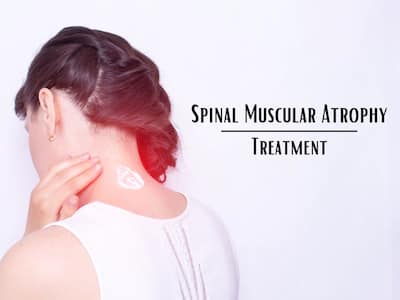
Spinal Muscular Atrophy destroys motor neurons, which are critical to most motor functions, such as movement, speaking, and breathing.
A hereditary condition known as Spinal Muscular Atrophy (SMA) damages the motor neurons in the muscles. The condition leads to muscle weakness, decreased movement, and difficulty completing daily tasks. The main inheritable factor in infant mortality has been SMA.
Spinal Muscular Atrophy in India affects approximately 1 in 10,000 live births. While the prevalence may seem low, SMA has a significant impact on affected individuals and their families. Infants with Type 1 SMA, the most severe form, often experience a rapid decline in motor function, leading to challenges in breathing and swallowing.
Children with SMA can currently receive supportive care in India that includes feeding, physiotherapy, orthotics, assisted ventilation, and spine stabilization. However, the landscape has been evolving offering a gleaming hope for the patients and their families.
New Treatment Approaches
Here are the options you can choose from:
Gene Therapy
One of the most promising breakthroughs in SMA treatment is gene therapy. Innovative approaches like Zolgensma have garnered attention for their potential to address the root cause of SMA. Zolgensma involves delivering a functional copy of the missing or mutated SMN1 (survival motor neuron
1) gene into the patient’s cells, aiming to restore motor neuron function. This revolutionary therapy offers renewed hope for improved muscle strength and function.
Pharmacological Interventions
Beyond gene therapy, pharmacological interventions such as Spinraza have emerged. As their survival motor neuron 1 (SMN1) gene has been altered or deleted, people with SMA are unable to produce enough of the SMN protein that their motor neurons require to function. They do have SMN2, but it does not create enough of the protein necessary for motor neurons to survive. Here SPINRAZA can be of assistance.
READ RELATED: 10 Best Sparkling Water Brands, According to Dietitians
Moreover, addressing musculoskeletal complications is essential to enhance the quality of life. Surgical interventions like spinal fusion help manage scoliosis, a common issue in SMA patients. Additionally, orthotic devices and physical therapy aid in preserving mobility and optimizing function.
Effective SMA management demands a collaborative approach of medical experts and coordinated efforts to ensure a holistic treatment plan tailored to individual patient needs. Regular assessments and adjustments are essential to track progress and adapt interventions as necessary.
In light of Spinal Muscular Atrophy Awareness Month, it’s encouraging to consider the improvements in SMA care. Gene therapy and pharmaceutical treatments provide renewed hope, changing the situation for patients and their families.
The above article has been written by
Total Wellness is now just a click away.
Follow us on
Don’t Miss Out on the Latest Updates.
Subscribe to Our Newsletter Today!
window.addEventListener(‘load’, (event) => {
$(‘#commentbtn’).on(“click”,function(){
(function(d, s, id) { var js, fjs = d.getElementsByTagName(s)[0]; if (d.getElementById(id)) return; js = d.createElement(s); js.id = id; js.src = “//connect.facebook.net/en_US/sdk.js#xfbml=1&version=v2.3”; fjs.parentNode.insertBefore(js, fjs);}(document, ‘script’, ‘facebook-jssdk’));
$(“.cmntbox”).toggle();
});
});








